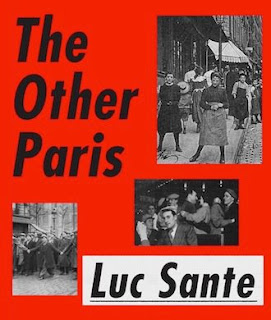Ancestors?
The portion of the apparent family collection that I was able to obtain consists of thirteen photographs in a variety of formats, dating from c.1880 to at least 1933. Those that bear indication of their source come from four states: Tennessee, Missouri, Louisiana, and Oklahoma. Some were taken by studio photographers (all were apparently white) whose activities have been documented elsewhere; others are casual snapshots, probably taken by amateurs. A handful of the subjects are named: Vivian Garrett, Guss Crader from Jennings, Louisiana, Laurence (no last name). I've examined the auction listings of the other items that I wasn't able to obtain, but there isn't much more information to be gleaned there.
The images in this post include some of the earliest photographs from the group. All are studio photographs, and three come from Franklin County in the south-central portion of the state of Tennessee. The badly faded but haunting portrait at the top of this page, which is in the carte de visite format, was taken by Rufus B. Williams of Winchester, Tennessee. The reverse of the mount is shown below.
Williams, who was born in 1851, was in business by 1883 and remained active as a photographer for some years thereafter; he would go on to serve several terms in the Tennessee state legislature. The sitter's eyes have been marked with tiny pinpricks, perhaps to make them stand out.
The next photograph was taken by C. S. (Charles Stewart) Judd (1844-1892), a member of a family that included several other professional photographers.
The image, which is only 1.5 x 2.25 inches excluding the mount, is from the studio in Sewanee that Judd established in 1879; at various times he also operated in Columbia, Pulaski, and Monteagle. The same photographer was also responsible for two other images from this collection that are not in my possession; one, very similar to this one, depicts a young man whose last name may have been Miller; the other was taken in Judd's Columbia studio.
The next two photographs are by unidentified photographers and depict unidentified subjects. The first, of a standing woman with her hand on the shoulder of an older woman, is quite beautiful; having the two women stare in entirely different directions may have been a conventional studio pose, but it is deeply moving nonetheless. The water-damaged one that follows it, of a woman and child, is more awkward and uncomfortable.
At first glance the studio where the cabinet card below was taken is unidentified, but one corner of the image has begun to peel back from the mount, exposing the name "Schleier," and in another corner the word "Nashville" is legible through the thin photographic paper.
This would almost certainly be Theodore M. Schleier, a well-documented photographer who operated studios in New Orleans, Nashville, and Knoxville at various times between the 1850s and 1890, before serving as consul to the Netherlands under the administration of Benjamin Harrison. Schleier, who had Republican ties, was known for his portraits of Union soldiers. I'm not sure why the photo was mounted so as to hide the name of the studio; perhaps it was simply a mistake. The subject's mustache has been darkened by hand.
The last picture on this page, shown below, was taken at the Byarlay Studio in St. Joseph, Missouri. Byarlay, who was also an agriculturalist, was active as a photographer over a long period stretching roughly from 1880 to 1920, after which his establishment was renamed Bloomer Byarlay Studio. The photograph is almost certainly twentieth-century; the mount is similar to that accompanying the graduation portrait of a young man that will appear in a later post. The woman holds a relaxed, conventional pose; both she and the photographer have done this before.
One thing that should be noted about all of these photos is that they exist at all because the sitters voluntarily
chose to be photographed. They aren't "documentary" or "colorful" images taken for the amusement or edification of white viewers. As far as I can determine, the identifiable photographers — Williams, Judd, Schleier, and Byarlay — were white, but subjects and photographers alike apparently felt comfortable in engaging in a commercial transaction centered around one of the ubiquitous rituals of late-19th-century bourgeois life: having one's photograph taken. Doing so would not have involved any great expense (some of the cruder and smaller images would have been very inexpensive), but it required a level of participation in urban or town life. They are, that is, portraits of
citizens, in a social if not political sense. The photograph in the next post, however, may give a hint at the extent to which that citizenship was constrained.

















































